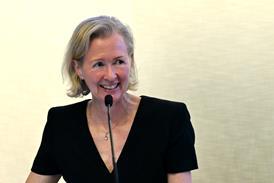Much fun was had in the media recently with the Ig Nobel Awards, handed out to improbable bits of research, and Obiter may have come across a major contender within the legal profession for next year's ceremony. Alex Long, a law professor at Oklahoma City University, has produced a list of musical artists most frequently cited by legal writers in the US and has coined a phrase no legal journalist ever thought he would get to write: 'Disco is dead in legal writing.'
Prof Long found that Bob Dylan was by far the most cited musician, followed by the Beatles. Joni Mitchell was the only woman, and the other musicians, in order of popularity, were: Bruce Springsteen, Paul Simon, Woody Guthrie, the Rolling Stones, the Grateful Dead, Simon & Garfunkel and REM. It's not hard to see a generational bias here, as the choices indicate that male lawyers who grew up in the sixties and seventies are the predominant legal authors in the US.
He was prompted to conduct the research after noticing references to music lyrics in various articles and judgments, and in fact he is not impressed by them. 'Legal writing is meant to be persuasive and oftentimes lyrics get in the way,' Prof Long tells the National Law Journal. 'I never asked anyone why they do it, but I think it is because it is fun to do and they're bored.' By and large, he suggests, using a lyric feels like a stretch by the author or a plug for a favourite artist.
Others disagree. New York Law School Professor Michael Perlin says quoting from a song makes the point and people remember it. He points to a much-cited 1981 court decision in California, which used Dylan's line 'you don't need a weatherman to know which way the wind blows' to explain that expert testimony is unnecessary when there is common knowledge. In addition, a couple of judges told the journal, lyrics can liven up a monotonous court ruling.
However, the point of the Ig Nobel Awards is to recognise research that makes people laugh, and then to think. Prof Long's work certainly achieves the first goal - but does it meet the second criterion?
Charity Explorer provides a reputable reference tool for solicitors, will-writers and their clients who want to leave a legacy or charitable gift.
Visit Charity Explorer
Whether you are looking for legal expert witnesses, legal training/CPD providers, international law firms, administration of estates, legal software suppliers, barristers chambers or any other general legal service, the Legal Services Directory will provide a suitable option.
Visit Legal Services Directory

























No comments yet